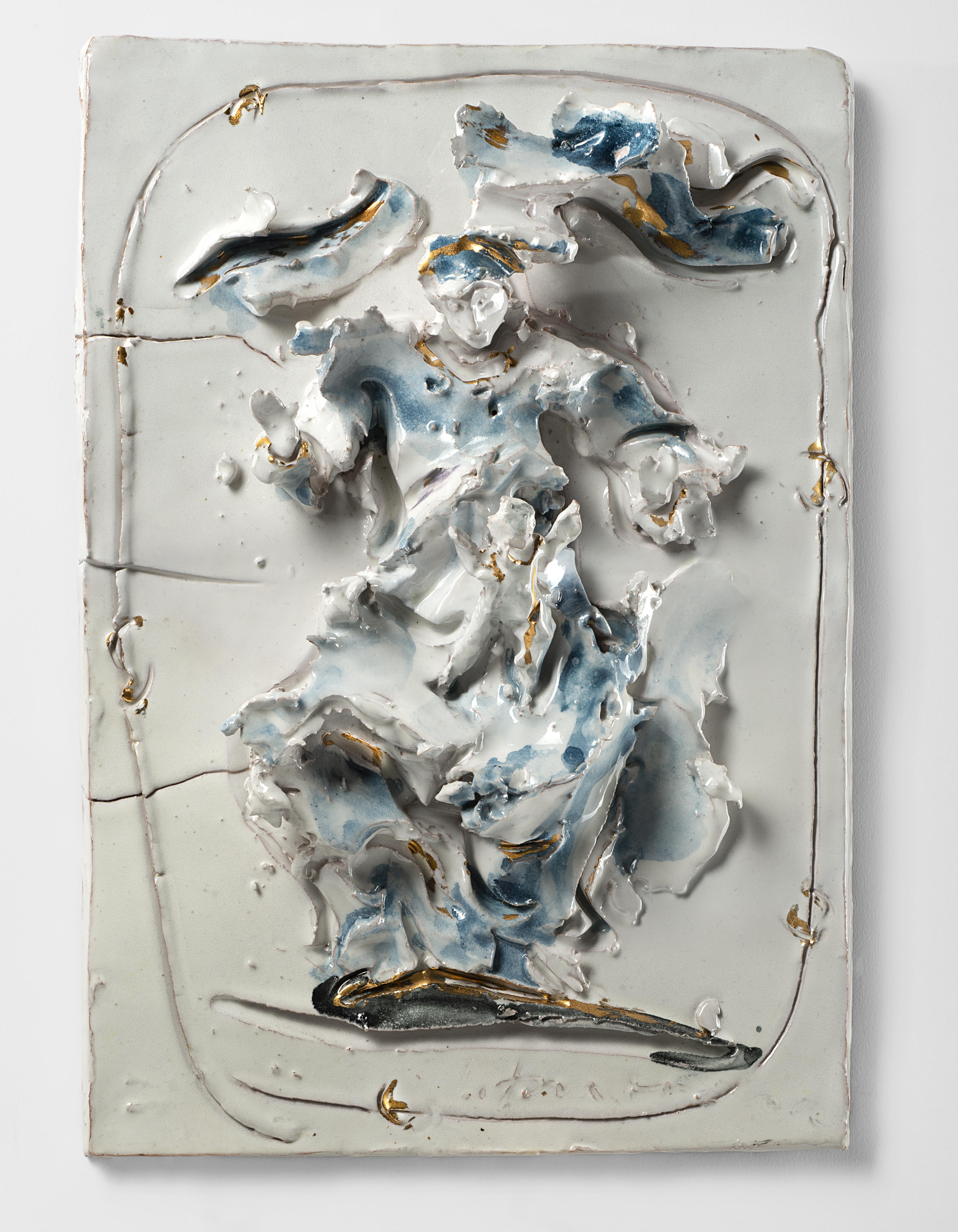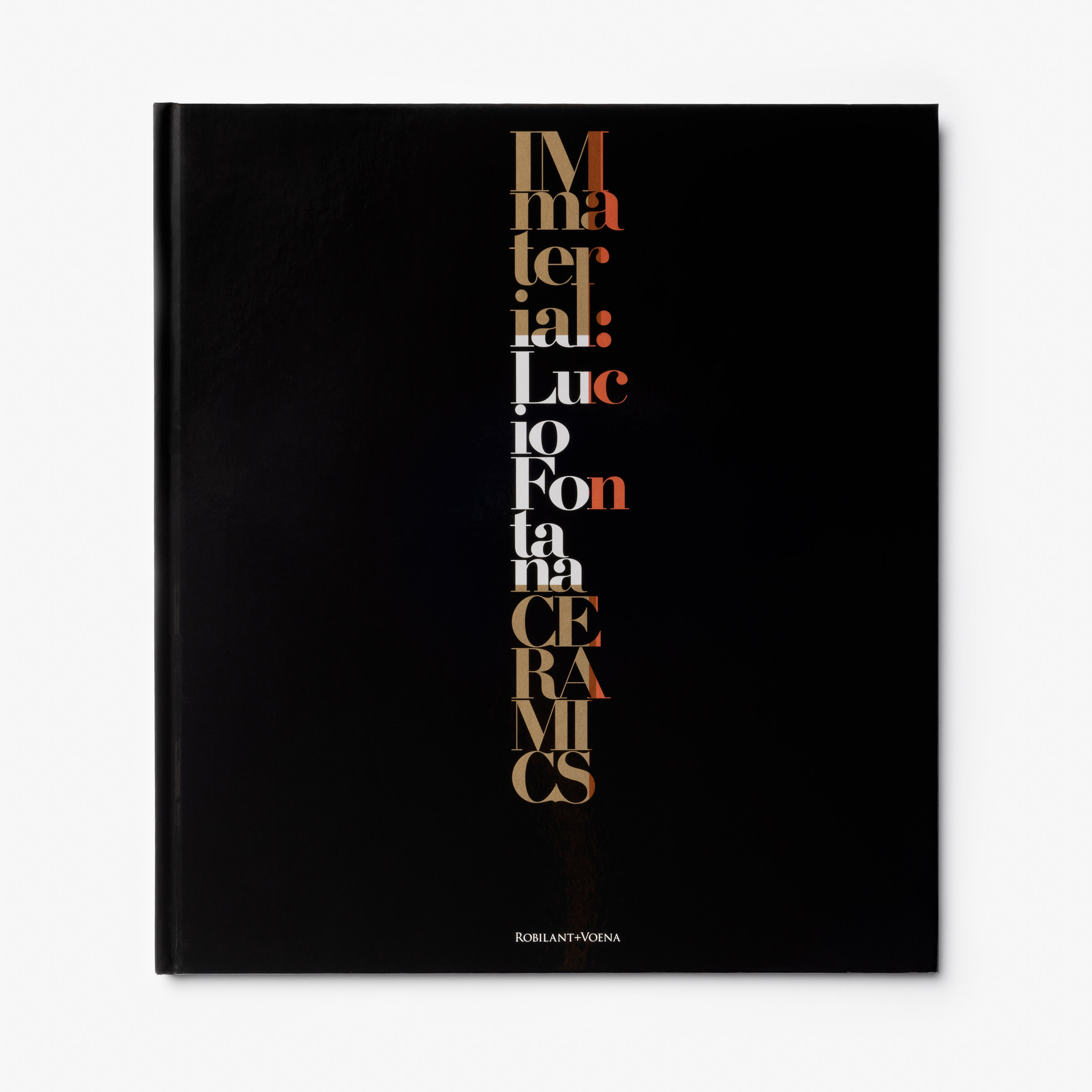Lucio Fontana
b. 1899, Rosario de Santa Fé, Argentina
d. 1968, Comabbio, Italy
Madonna and Child
1954–55
Painted and glazed terracotta
42 x 29 x 10 cm (16 1/2 x 11 3/8 x 4 in.)
Provenance
Literature
Description
“[the] Baroque was a leap ahead…it represented space with a magnificence that is still unsurpassed and added the notion of time to the plastic arts. The figures seemed to abandon the flat surface and continue the represented movements in space…”—Lucio Fontana
Sumptuous in its rich materiality and dynamic in its expression of vigorous movement, Lucio Fontana’s Madonna and Child is one of a series of glazed ceramic sculptures that combines elements of figuration with the dominant ideas of Spatialism, the revolutionary movement that the artist had founded in 1947. Fontana radically reimagined one of art history’s most iconic subjects, the Madonna and Child, offering a near-abstract, flamboyantly gestural vision of this religious subject. In a symphony of pure white glaze accented with touches of deep, opulent blue and rich gold, the figure of the Virgin sits enthroned, the just discernible figure of Christ seated on her lap, while suggestions of a pair of airborne putti hover above.
Executed between 1954 and 1955, this Madonna and Child dates from one of the most experimental and innovative periods of Fontana’s long and prolific career. Regarding himself primarily as a sculptor, Fontana had, since his earliest days as an artist, been interested in the medium of sculpture. Having worked in a variety of different sculptural modes, both figurative and abstract, Fontana returned to Milan in 1947 with a radically new artistic outlook. Believing in the wake of the Second World War that traditional modes of painting and sculpture were outdated, unable to reflect the modern epoch, Fontana called for a reformation of the visual arts. He envisaged art coming out of its frames and off its plinths to embody dynamic concepts of movement, colour, time and space, freed from the conventional artistic categories of painting, sculpture and architecture. These ideas coalesced into what Fontana called Spatialism. “Man is tired of the forms of painting and sculpture”, he declared in the Manifiesto Blanco, a tract penned by a group of avant-garde artists in 1946. “The oppressive repetitions show that these arts have stagnated in values that are extraneous to our civilization, and have no possibility of development in the future…we abandon the practice of all the forms of known art, we commence the development of an art based on the unity of time and space…” (Manifiesto Blanco, 1946, quoted in E. Crispolti and R. Siligato, eds., Lucio Fontana, exh. cat., Rome, 1998, p. 116).
Central to the initial conception and development of Spatialism was the Baroque. Fontana was fascinated by the way in which the art of this style embodied an unprecedented expression of movement. He was in awe of the grandeur and the dramatic and exaggerated gestural abandonment that characterised the depiction of figures in the art of this period. This pictorial or sculptural depiction of the movement of matter through space also introduced the concept of time; and it was these ideas that would become central to Fontana’s Spatialism. In 1946, the artist had declared, “[the] Baroque was a leap ahead…it represented space with a magnificence that is still unsurpassed and added the notion of time to the plastic arts. The figures seemed to abandon the flat surface and continue the represented movements in space…” (ibid., p. 115).
Not only is the religious subject of the present work immediately indicative of the powerful impact the Baroque had upon Fontana’s practice, but the execution of this sculpture demonstrates how the artist used the central tenets of this style to forge his own abstract, spatial art. Vigorously modelled into a bold, multifaceted relief of undulating peaks and troughs, the Madonna and Child is a vision of pure swirling material exuberance. Gestures and movements continue through space, a dynamic, vital, and unequivocally modern exposition of this traditional religious subject.
Registered at the Fondazione Lucio Fontana, no. 73/1.








